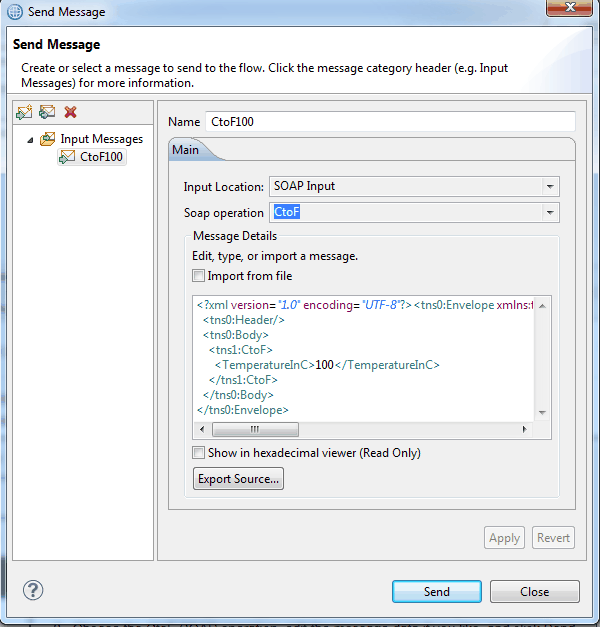Creating input messages by using the Flow Exerciser to check that your message flow processes messages as expected
You can create a new input message, or duplicate or edit a previously saved input message by using the Flow Exerciser. You can then send the message to the flow.
Before you begin
You cannot
use the Flow Exerciser to send messages
to an MQInput node in a
flow in the following situations:
- The MQInput node is configured with a policy.
- The MQInput node has the MQ connection property set to Client Channel Definition Table (CCDT) file.
- The message flow is deployed to a remote integration node, and the message flow receives messages on an MQInput node that is configured to use a local queue manager.
If the message flow is part of a REST API, you cannot use recorded messages or input messages created by the Flow Exerciser; however, you can use an external tool or client to form and send input messages to the flow.
 ) in the
) in the  )
)